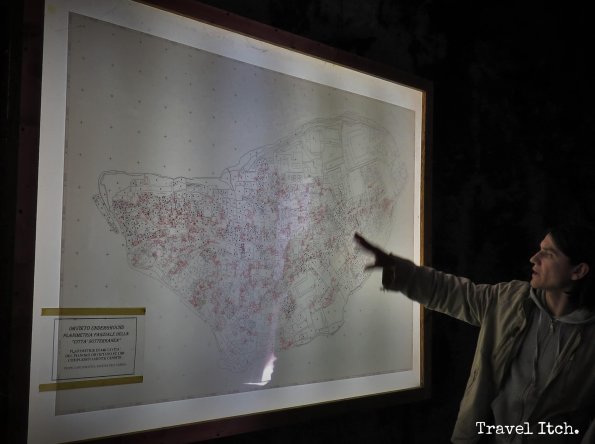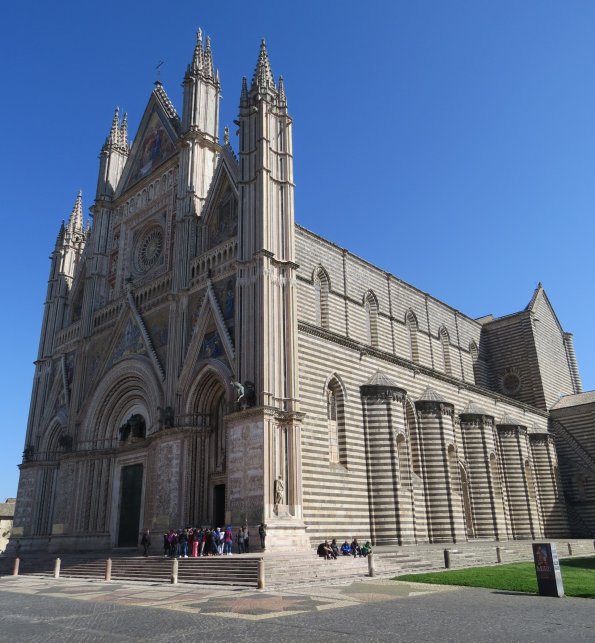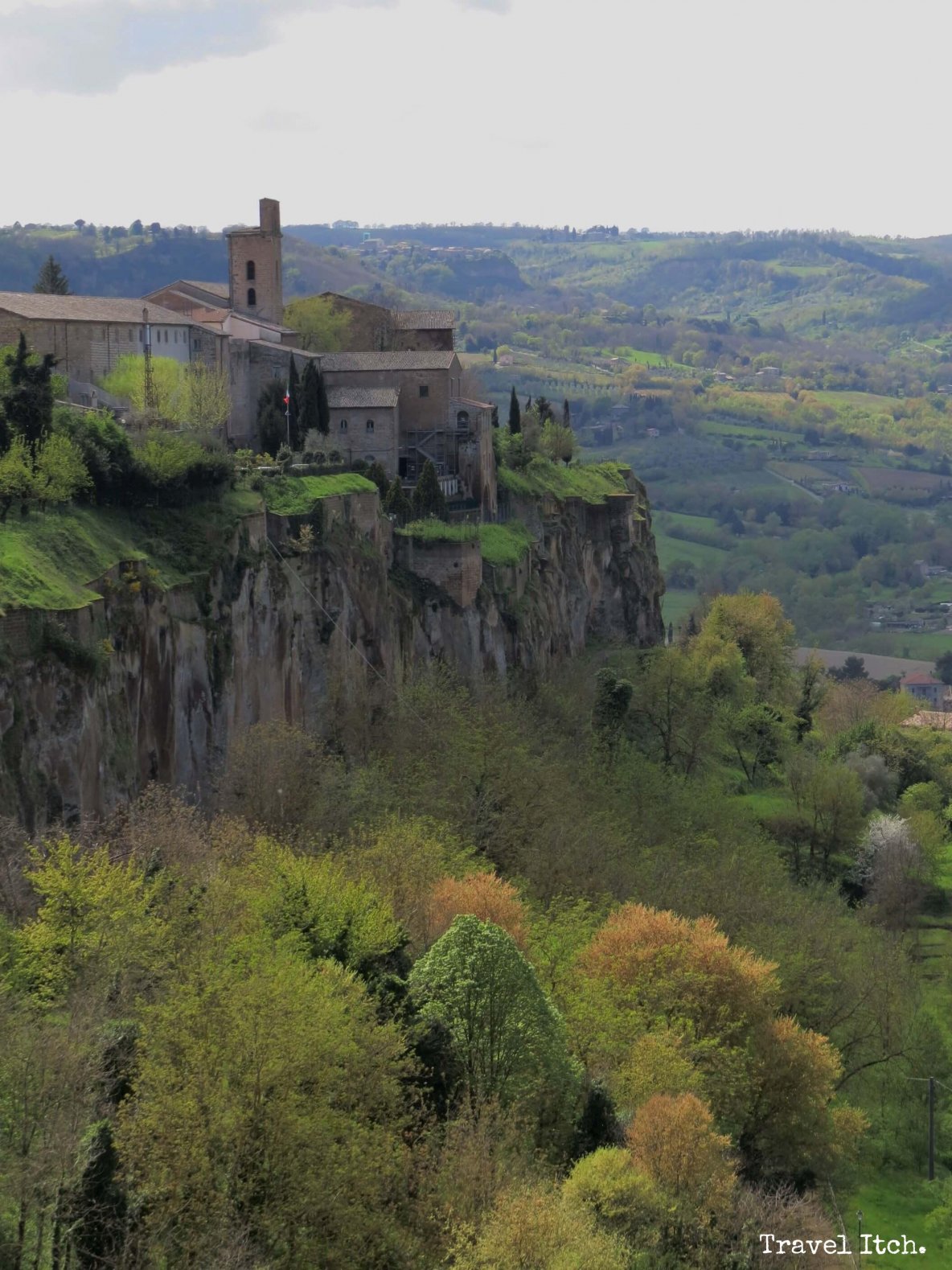Orvieto
Orvieto sits on top of spectacular vertical cliffs of volcanic tuff that seems to erupt from the most striking green landscape. Miles of emerald green trees, farm land and vineyards worthy of any postcard. Sit awhile. Soak in the view. Umbria is known as the ‘Green Heart of Italy’. It’s easy to see why.
Etruscans, Romans, Popes, secret passageways!
Orvieto has a chequered history worthy of a movie. Etruscans moved in over 3000 years ago until the Romans destroyed it in 264BC. It was the home and refuge of a dozen popes during turbulent years of fighting. Orvieto is a natural fortress and is located on the route from Rome to Florence – worth fighting over. And, most exciting of all, it has a secret underground city built within the cliffs!
Orvieto Underground city

This image maps the 100s of underground chambers beneath the city of Orvieto.
The underground city is truly amazing – and clever. The city of 1200 underground caves has been built into the soft volcanic rock beneath the city where the people of Orvieto could escape to safety while wars raged above them. Popes even used the city as a safe haven throughout history.
Surprisingly many of the caverns and passageways still remain private property and not open to the public. Back in the day, people dug beneath their homes looking for water and temperature controlled storage and most interestingly a place for pigeon nests (or cotes or colombari).
The pigeon nests peaked my interest. Specially built rooms with lines of small square holes in the walls were homes to pigeons that could fly out through the day, breed and become pigeon pie when necessary. Pigeon pie remains on the menu in Orvieto today!
Take a walk through the caves with a tour guide (the only way you can enter the city) and you will see a large well preserved olive mill press, grindstones, tubs that still have the residue of olive oil, cellars, stables, fireplaces, mangers for animals and two enormous wells built by the Etruscans that go down through the rock for 36m.
Tunnels, secret passageways, stairs and paths running along the cliff walls with openings offering views of the Umbrian countryside as well as a vantage point to see who was coming to attack I am assuming.
The Duomo di Orvieto

Duomo di Orvieto in its gothic splendor!
The town of Orvieto is peaceful. The cobbled stones remind you that you are in beautiful Italy and the quaint shops can distract you easily. Eventually you will stumble upon the Duomo di Orvieto in all its full gothic glory.
The façade, with its imposing four spires, decorative bass relief stories from the bible, its famous carved rose window, and golden mosaics, soars to over seven stories high. The gothic style façade appears to be attached to an ordinary building that is decorated in extraordinary stripes of black and white marble. It is a stark contrast to the style of the façade. Sit for a while and take it all in.
The bas-reliefs on the panels around the doors and on the four pillars are also pretty interesting. They tell stories from the Old and New Testaments of the Bible. This was quite a common way of storytelling during a time when only a few new how to read. The fact that the sculptures around the beautiful rose are life size images will give you some idea of the scale of this building.
The first pillar illustrates stories from the Genesis. The Jesse Tree appears on the second pillar, to represent the genealogy of Jesus Christ. The third pillar confirms what had been prophesied on the second and the fourth and last pillar an apocalyptic vision of the Universal Judgement is sculptured, that includes the Resurrection and the division between the Reprobate, condemned to the fire of Hell and the Elect, on their way to Heaven, preceded by a procession of Saints, men and women. Scary stuff.
Golden Mosaics of the Duomo
I’m fascinated by how long they have been around, that mosaics can be created from almost any material and how difficult the art is. I’ve tried numerous time to create a masterpiece!
The mosaics on Duomo di Orvieto façade are extraordinary. I didn’t find them extraordinary for the story they tell, you’d expect a mosaic in a church would highlight biblical stories. This mosaic masterpiece was a major project. It started in 1321 and continued into the 16th century! The tiles were sourced from the local producers of glass that used a purpose-built furnace on the worksite, even more glass tesserae were brought from Rome and Florence. Stone and ceramic tesserae came from castle workshops in Monteleone and Piegaro and sheets of gold and silver leaf were brought from Spoleto.

